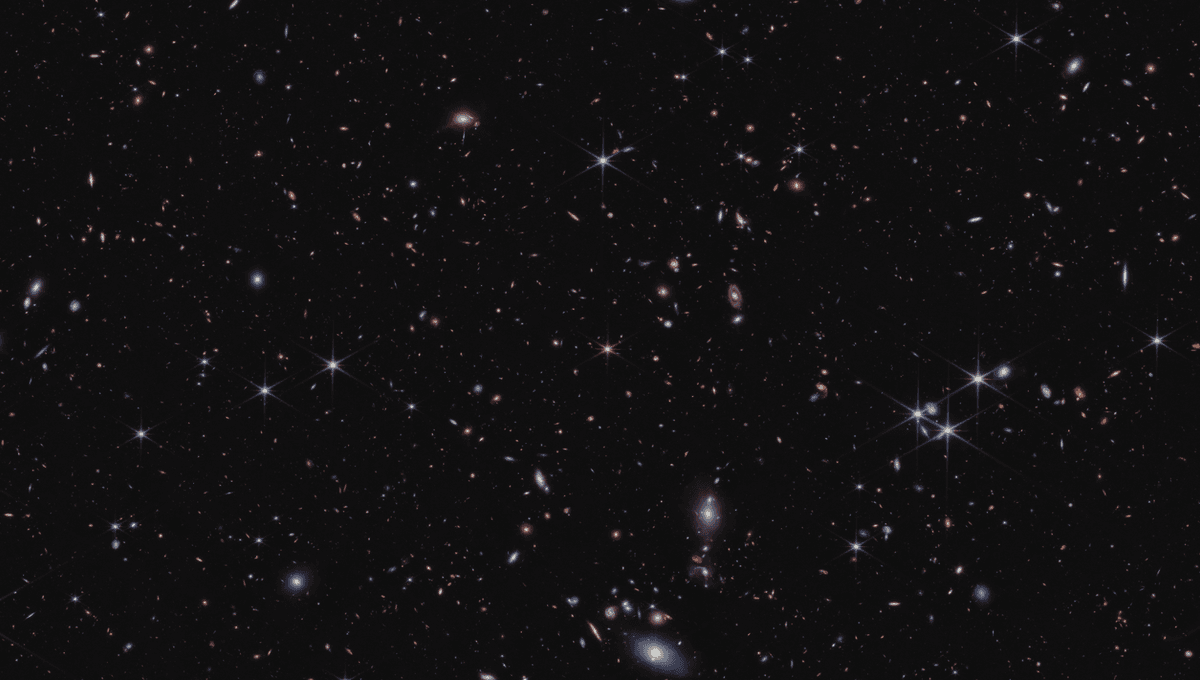
The universe is undergoing an accelerated expansion. The so-called Hubble constant indicates the rate of that expansion, and there are a few ways for astronomers to measure it. But there is a major problem. The main methods profoundly disagree with each other. This is the saga of the Hubble tension, challenging everything we know (and some of the things we do not know) about the universe.
The two main approaches to working out the expansion rate are as follows. You can measure the cosmic microwave background (CMB), the first light that was released in the universe, roughly 400,000 years after the Big Bang. Alternatively, you can measure the distances of a lot of galaxies and how fast they appear to move away from us due to the space in between expanding.
The first method gives a value of 67.4 kilometers per second per megaparsec. This unit of measurement might seem a bit weird at first. It means that if two galaxies are 1 megaparsec (3.26 million light-years) apart, the universe expanding makes them look like they are moving away from each other at a speed of 67.4 kilometers (41.9 miles) per second. Using the galaxy distance method instead, the value is 72.8 kilometers per second per megaparsec. The uncertainties on each value are small and they don’t overlap.
The [JWST] measurements give the same results as the Hubble telescope for the same objects, so it strengthens the case for the tension.
Professor Adam Riess
The Hubble Space Telescope was the source of the Hubble tension saga; its observations have been a crucial part of the challenge. Astronomers have been using its successor, the James Webb Space Telescope (JWST), to confirm or deny this data.
The team, led by Nobel laureate Adam Riess, has used the largest sample of JWST data to better estimate the Hubble constant and once again, found that the tension remains. The JWST data, although with wider uncertainty, found the expansion rate to be 72.6 kilometers per second per megaparsec.
“The [JWST] measurements give the same results as the Hubble telescope for the same objects, so it strengthens the case for the tension because it rules out that the tension was caused by a flaw in the Hubble telescope measurements,” Professor Riess, from John Hopkins University, told IFLScience.
Earlier this year, work carried out by Professor Wendy Freedman, of the University of Chicago, and her team used a data sample from JWST to estimate the expansion rate and found a value between Hubble data and the CMB. This was not seen as the end of the discussion, but it gave some hope that maybe the solutions were truly in between.
In our interview with Freedman, she stated how more observations from JWST were need for more data; this new work incorporates the Freedman data and other observations. It is perfectly possible for small samples of similar or overlapping objects to find different central values and large uncertainties. This is known as sample variance.
“Here is a useful analogy: you are trying to measure the speed of traffic on a highway. You use a radar gun to measure several cars and get an average. Someone else uses a different radar gun. When they measure the same cars they get the same average. That is what has happened with [JWST] and Hubble and confirms Hubble,” Professor Riess told IFLScience.
“However, if they measured the speed of a different set of cars and both samples were small, you might see differences. The answer is to measure a bigger sample (to reduce sample variance) or compare the same cars (apples-to-apples) to cross-check the radar guns.”
The JWST data by itself has large uncertainties, and while the agreement with the Hubble data strengthens the case, more data will need to be collected from even more distant galaxies to strengthen the claim. Few other methods have been able to support one camp or the other. It might be possible that either or both approaches are not estimating their uncertainty correctly and the answer is in the middle. Or, it could be that our theory of the universe needs to be altered. Is the fault in our stars, or ourselves?
“The discrepancy between the observed expansion rate of the universe and the predictions of the standard model suggests that our understanding of the universe may be incomplete. With two NASA flagship telescopes now confirming each other’s findings, we must take this [Hubble tension] problem very seriously—it’s a challenge but also an incredible opportunity to learn more about our universe,’’ explained Professor Riess in a statement.
The study is published in The Astrophysical Journal.
Source Link: Challenge To Theory Of The Universe Reignited In New Publication